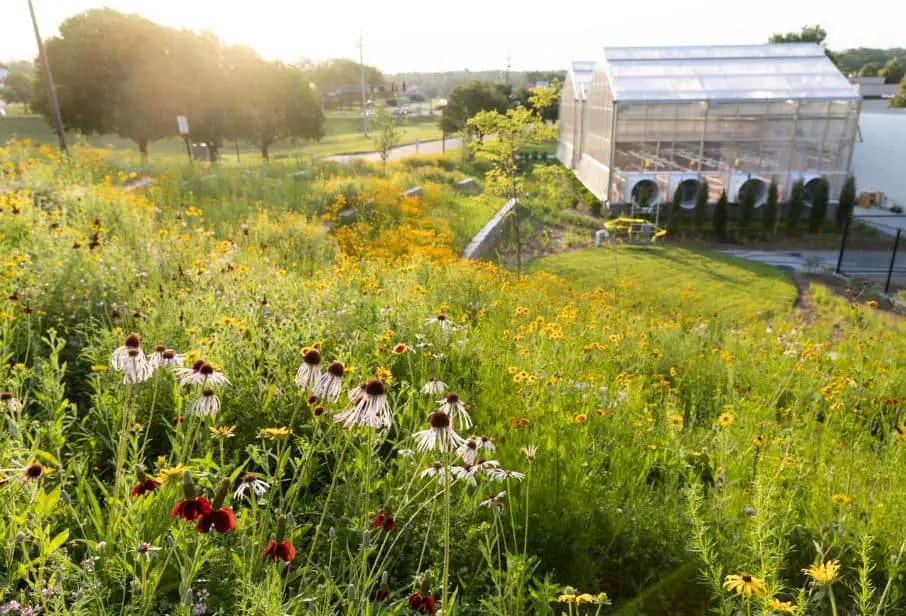Alternatives to lawns are growing in popularity among homeowners. They are more affordable than regular turf grass and help local biodiversity. Prairies, a possible lawn substitute, were previously indigenous to most of central North America. This area’s gardeners may gain by reintroducing natural grassland to parts of their yards.

Why Choose an Alternative to a Lawn?
Developing a tiny prairie garden is one way to design an alternative to a conventional turf grass lawn. So why should your grass be replaced? Turf lawns provide nothing to the natural fauna and are often sterile settings. They do not provide pollinators access to food sources, cover, or nectar.
Native animals, plants, insects, and pollinators suffer when grass lawns take the place of natural ecosystems.
The biggest advantage of a grass substitute is that it preserves the natural world and all the creatures that inhabit it. Homeowners and gardeners may also benefit from reduced expenditures and upkeep requirements.
What is a Prairie?
A prairie is a habitat where natural, local grasses predominate. In contrast to woody plants, herbaceous plants grow on prairies. In other words, there are few or very few bushes or trees. Rich soils, little rain, frigid winters, and scorching summers are characteristics of prairies.
The words “meadow” and “prairie” are sometimes used synonymously. However, this needs to be corrected. The word “prairie” refers to a particular habitat in North America. Meadows features more flowers than prairies, which is a key distinction between the two types of landscape.
Where Are Native Prairies?
It is essential to choose a grass option that is appropriate for your area and natural setting. For gardens, the natural range of this kind of environment, which encompasses the plains states and portions of the Midwest, is a prairie front yard or backyard. American prairies come in three different varieties:
Shortgrass. Shortgrass plains dominate Western portions of the prairie range. Eastern Montana, Wyoming, Colorado, & New Mexico are included in this. Mixed or middle grass.
Much of the Dakotas, Nebraska, Kansas, Oklahoma, & northern Texas are typically covered with mid-grass plains.
Tallgrass. Western Minnesota, Iowa, Missouri, and portions of Wisconsin, Illinois, Indiana, & Michigan are home to taller prairie grasses.
How to Change Lawn to Prairie
While creating a prairie is difficult, the benefits might be significant. A prairie does not need pesticides and other chemicals and requires minimal upkeep. After the first year, a converted yard’s upkeep expenditures decrease from hundreds to tens of dollars.
Many advantages of prairie grass may be enjoyed without converting your whole yard. Choose a location on your property that receives a lot of sunshine and has few to no trees. Doing a soil test is also a good idea so you can decide which plants are best for the area and adjust the soil if required.
A location that has a limited number of invasive or weedy plants will be simpler to convert. These will have to be removed. Depending on how much vegetation there is, clearing it could need the services of a professional. You may use insecticides to remove vegetation to make room for a prairie. Another option is to drape a dark sheet over the region for a few months after the space is clean, deeply till the soil (approximately 12 inches) (30.5 cm).
Then comes the enjoyable part: selecting plants. Choose flowers and grasses from your region. If you are still determining which are the best, your local extension office may assist. You may plant seeds or transplants after you know what to plant. While less costly, seeding requires more time to develop. When the remainder of your plants mature and get established, choose at least one grass that grows quickly to help crowd out any weeds. Late spring and early summer are the ideal times to plant seeds for prairie grasses.
A prairie may initially need little water and mulch to cover the seeds, but after that, it needs minimal maintenance. You may also need to uproot undesired weeds in the first few years. Regular burning is necessary for the long-term maintenance of a prairie, but you may hire experts to undertake this task.
You must commit time and money upfront to establish a prairie lawn, but once it does, you will profit from native, natural grass.


